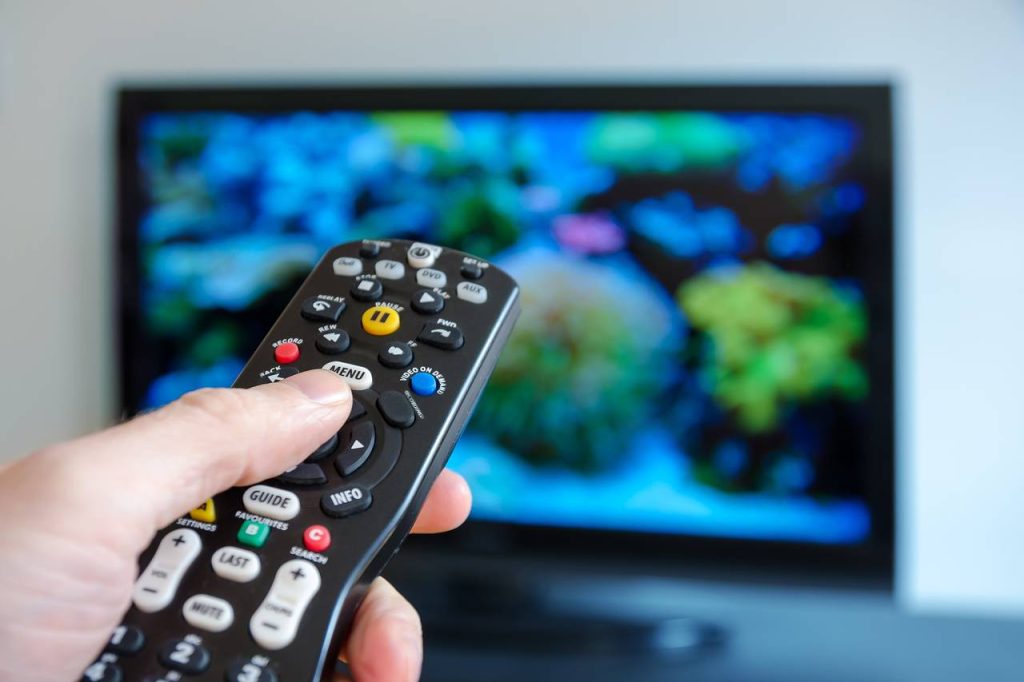Cable TV is limited to working dockside because, well, there’s a cable connected to your boat. Cable is the easiest way for marinas to deliver TV to your boat but, because it only works dockside, it’s also the least flexible. If you’re out for the day or travelling away from your home marina you won’t have any TV. Most marina cable offerings are limited because they typically don’t distribute cable boxes and so you’re limited to unencrypted channels. Frequently this also means programming is limited to standard definition. If a cable box is provided you may be able to get a cable box with a DVR. With a DVR you could record programming while at the dock that could be watched while away from the dock.
Streaming Services
With the emergence of cord cutting, the practice of canceling traditional pay television and relying on streaming services, there are now many more options and these can be just as practical on a boat with an internet connection as they are at home. These include programming from Netflix, Hulu, and Amazon Prime as well as live TV streaming from services like Sling TV, DirecTV Now, YouTube TV, Hulu Live TV, PlayStation Vue, Fubo TV and a handful of others. Over the last year, I’ve experimented with nearly all of these services. I’ve found the original content services like Amazon Prime, Hulu, and Netflix work quite well and reliably, however, the streaming live TV offerings have proved far less reliable. I have tried YouTube TV, Hulu Live TV, PlayStation Vue, and DirecTV Now. Between the various compatibility challenges, bugs and reliability challenges I encountered none of the services proved ready for regular service. I’m confident many of the challenges I encountered have been or will be resolved and I truly believe IP delivery is the future of TV. I’m just not sure that future is totally with us yet.
In addition to the services I’ve mentioned above, many of the individual networks have streaming options. So, if you subscribe to cable or satellite at home there’s an excellent chance you have access to their content either via individual or via their website.
Streaming services offer a mix of cloud-based DVR functionality and on demand programming. On demand allows you to watch a show some time after it’s been aired, usually 24 hours, and usually with un-skippable commercials.
Streaming’s biggest downfall is it requires an internet connection, a topic I’ve covered in my article on our connected year on the water. I’ve found that if we can manage about 5 megabits per second we can pretty reliably stream anything we want. But, if you’re out of coverage for internet connectivity you will also be without TV. I use Amazon Fire streaming sticks on the boat. At $39.95 they’re cheap enough to put one on each TV on Have Another Day without even having to think about it. Application support is pretty good with all the major streaming services represented but only some of the live TV streaming options. There are many options including Apple TV, Roku, smart TVs, and a myriad of other devices.
One last consideration with streaming live TV services is that because of their contracts with the networks they frequently have to enforce geographical restrictions. This most often means you won’t be able to watch stations local to your home area if you’re not in your home area. So, you probably won’t be able to watch your local news live if you’re 1,000 miles away from home, but you probably could use their cloud-DVR to record it then play it back later.
Making the decision
Deciding on the best way to receive TV on your boat is largely a factor of how you expect to use your TV and your budget. We live on our boat much of the year and I have young children. So, once they go to bed my wife and I retire to the couch in the salon and watch some TV. As a result, it’s pretty important to us that we have a viable way to receive and watch TV on the boat. Your own boating and cruising habits may dictate a different solution. If you frequently travel to the Bahamas satellite may deserve stronger consideration as you will likely be able to receive TV through much of the islands and roaming cellular bandwidth is more difficult. If you’re a die-hard sports fan finding the mix of programming options that ensures you can watch your favorite teams can dictate what solution works best for you.
With the rapid changes in television delivery taking place now there’s a good chance you can find something that will work for you now, but if you can’t new options are coming quickly enough that challenges and frustrations you experience today may well go away in the near future. Possibly to be replaced by new ones.


